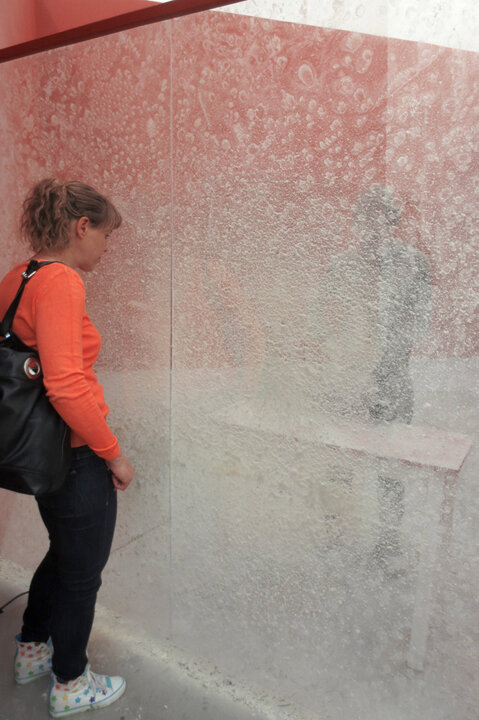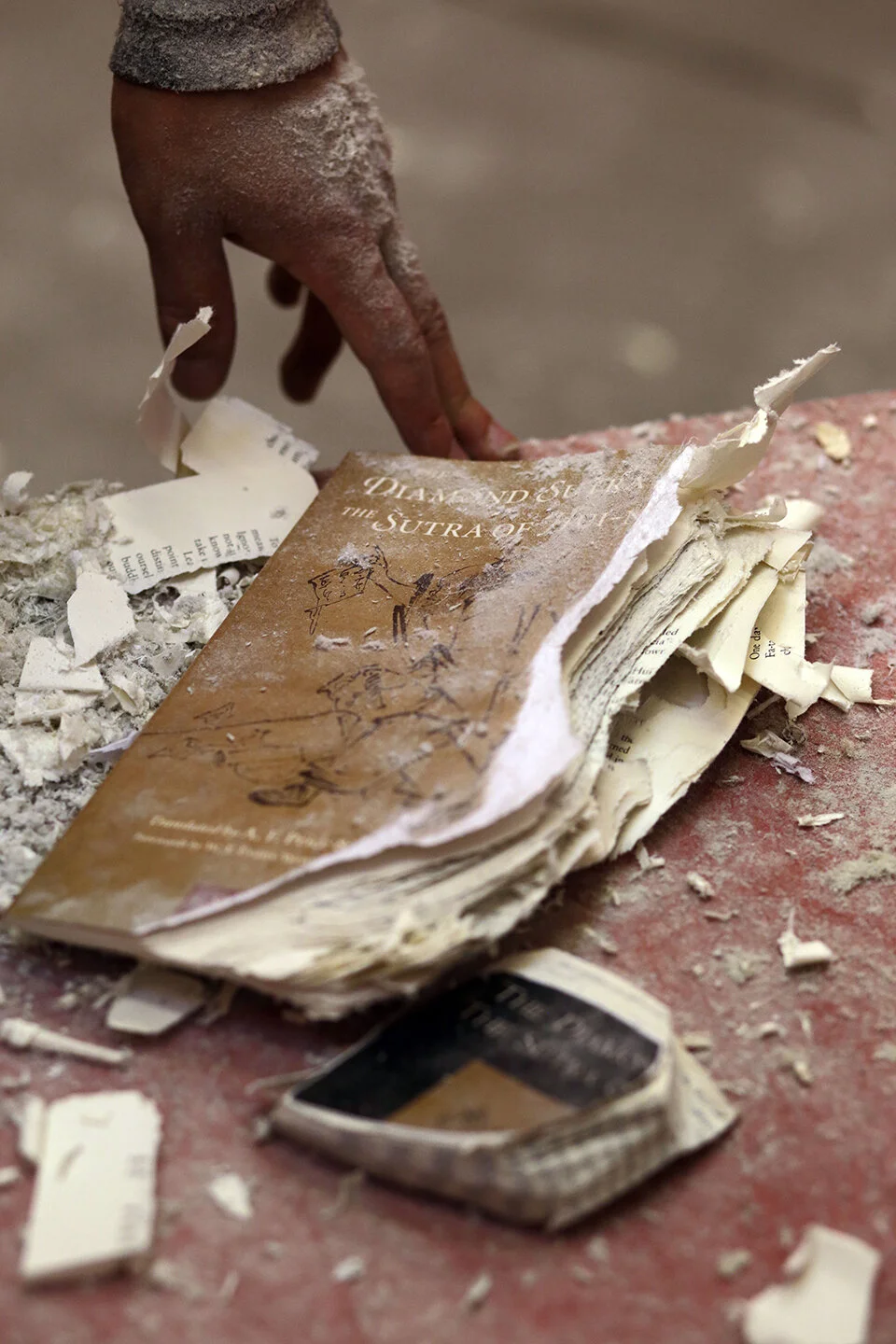Learning ● Diamond Sutra
Performance, first performed at Wie Kultur Berlin, 2 hours
May 17, 2013
For a duration of 2-3 hours, I am enclosed in a glass chamber (for the performance at WiE Kultur, this was a red room with a glass door,) where I engage in the act of sanding down the classic Buddhist scripture "The Diamond Sutra" (in a book form.) In the course of the 2-3 hours, the glass panel is gradually covered with the dust from the sanding, hence the act is 'whited out' by the act itself; as is the audience' view of the act. Also, I enter dressed in all black; and exit covered with white dust.
The cover of the book is a print of a famous Chinese painting of the Sixth Patriarch Hui Neng tearing to pieces "The Diamond Sutra", the scripture through which he allegedly attained enlightenment.
On the most immediate level, this works with the common analogy of our mind to a mirror, a notion originated at the time of the Sixth Patriarch of the Ch'an Buddhism. The other candidate for the Patriarchy famously stated in a poem that "Our body is the Bodhi tree; our mind a mirror" and that, to keep our perception of the reality true, we have to keep our mind clear, just as we have to keep mirrors free of dust. And Hui Neng also famously said that, "Bodhi isn't a tree; the mind not a mirror". He continued to say that "a person's true nature has no form, where does it collect the dust?"
With this piece, I am also thinking about the relationship between a system of knowledge and our perception. The system of knowledge that we rely upon to perceive actually alters the objective reality that we try to perceive. On the extreme, when a system of knowledge or belief is taken as a doctrine, it becomes a hindrance to our perception of the truth and prevents us from personal enlightenment.








